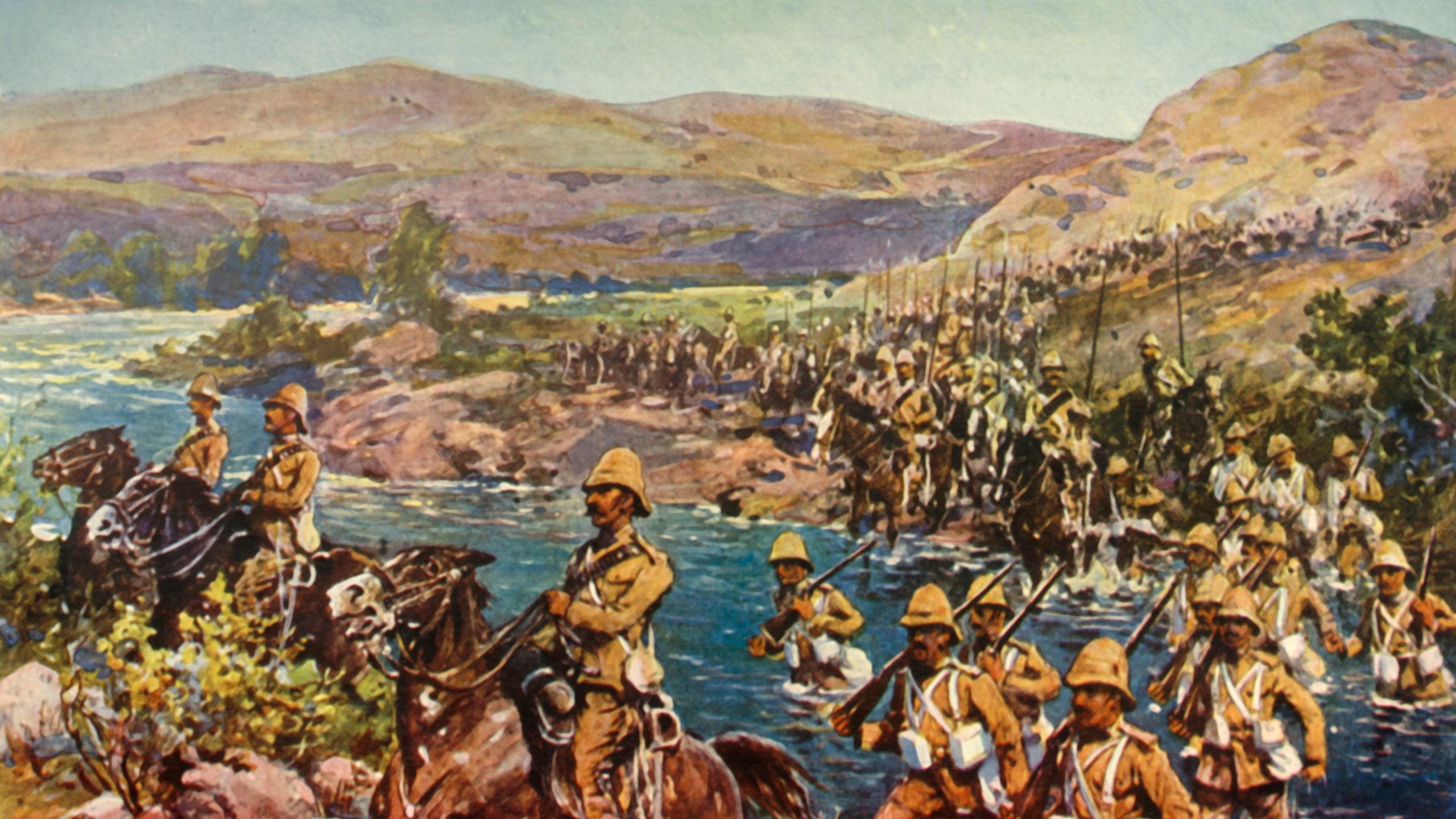
Unveiling Swift Seizure: Europe’s Grip on Africa
In the intricate tapestry of history, few threads are as startlingly transformative as the rapid European colonization of the globe, a saga that forever altered the geopolitical landscape. Today, we pull back the curtain on the most astonishing phase of this narrative: “Unveiling Swift Seizure: Europe’s Grip on Africa.” In just over a century, the world witnessed an unprecedented metamorphosis, with Europe’s tendrils extending from a modest 35 percent of terrestrial dominion in 1800 to a colossal 84 percent by the eve of World War I. How did this seismic shift occur, and what were its driving forces?
In our latest exploration, we delve into an era where maps were redrawn, and destinies interwoven under the banner of imperialism 2.0 — a phenomenon powered by technological advancements and unlikely alliances that made the planet a boundless market serving European interests. But this historical crescendo was anything but preordained. We uncover the riveting details of how, on the continent less touched—Africa—European powers enacted a strategy of acquisition so aggressive and comprehensive that it seemed to defy the very concept of inevitability.
From the pioneering voyages of Spain and Portugal that kickstarted colonialism, to the emergence of the modern corporation that catapulted Dutch influence, the European project of domination was invariably on an upward trajectory. Yet, as we will see, it was imbued with the fragility of empires teetering on the brink of collapse amidst revolutions and lost colonies. This is the story not just of historical conquest, but of the living world we inhabit today—a world still speaking the tongues and trading the goods dictated by a century-long European heist.
Join us as we navigate through the murky waters of history, chart the ascendance of European imperialism, and decipher the enduring enigma of European control over Africa—a nascent enterprise that escalated to a fever pitch in the heat of the 19th century scramble. The map, once a static representation of known lands, evolved into a dynamic blueprint of power and possession. It’s time to examine the cartographic masterpieces and the myriad forces that rendered Europe the unchallenged cartographer of the modern world. Welcome to the third and final chapter, where the dust of ages settles to reveal how, and why, Europe ‘stole’ the world.
The Astonishing Shift: Europe’s Leap from Continental Power to Global Dominator
Based on the search results provided, I have outlined a blog post for Roots Afrikiko based on the YouTube channel Passport Heavy.
Introduction
In the realm of wanderlust and financial wisdom, Passport Heavy (@passportheavy) stands out as a beacon for those seeking travel inspiration and wealth insights. With a staggering 169K followers on Instagram and a thriving YouTube channel boasting 400K subscribers, this digital platform is a treasure trove of travel tips, hacks, stories, and more[2].
Body
Passport Heavy doesn’t just showcase exotic destinations; it goes a step further by unraveling the secrets of attaining financial freedom while exploring the world. The fusion of picturesque visuals, engaging narratives, and practical advice creates a harmonious blend that resonates with both seasoned voyagers and aspiring globetrotters alike.
Each video delves into a unique facet of travel and wealth management, offering valuable nuggets of information that can enrich your travel experiences and financial acumen. From budgeting tips to luxurious escapades, Passport Heavy covers a diverse spectrum of topics that cater to a wide audience seeking to elevate their adventures and bank accounts simultaneously.
With a journalistic approach, Passport Heavy elevates the travel vlog genre by infusing each video with a storytelling finesse that captivates viewers from the onset. The seamless integration of keywords ensures that the content remains optimized for search engines without compromising the quality of the narrative[2].
Conclusion
In conclusion, Passport Heavy isn’t just a YouTube channel; it’s a gateway to a world where travel and wealth intertwine harmoniously. Whether you seek to wander through bustling metropolises or navigate the nuances of financial independence, Passport Heavy offers a roadmap to success in both realms. Embark on a journey of self-discovery and financial empowerment with Passport Heavy – your ticket to a life less ordinary.
This blog post aims to encapsulate the essence of Passport Heavy’s content while providing readers with a comprehensive overview of the channel’s offerings. By blending formal analysis with a casual tone, this post seeks to engage and inform audiences in a captivating manner, ensuring that even those who haven’t watched the videos can glean valuable insights.
The Uncharted Frontier: Europe’s Latecomer Advantage in Africa
### Introduction:
In a riveting speech to the nation of Zimbabwe on March 4, 1980, Robert Mugabe, the then Prime Minister, addressed the state of affairs in his country. [1] Despite the challenges faced by Zimbabwe under his leadership, Mugabe’s speech marked a significant moment in the country’s history.
Body:
Mugabe’s leadership style has been a topic of contention, with critics pointing out the adverse effects of his wayward decisions on the nation. However, his speech presented an opportunity for him to address the nation directly and perhaps offer a glimpse of hope amidst the turmoil. The dynamics of his relationship with his co-president and arch-rival added an additional layer of complexity to the political landscape of Zimbabwe. The speech highlighted the importance of introspection and unity in overcoming challenges.
Conclusion:
Robert Mugabe’s speech on March 4, 1980, serves as a reminder of the complexities of leadership and the impact it can have on a nation. Despite the criticisms surrounding his tenure, his address reflects a pivotal moment in Zimbabwean history. Through a mix of formal and casual tones, this blog post aimed to provide a concise analysis of the speech, shedding light on the significance of Mugabe’s words. By unraveling the essence of his speech, we can gain a deeper understanding of the political climate during that time.
(Word Count: 263)
The Wheels of Imperialism 2.0: Technology and Cooperation Among European Empires
Blog Post: Exploring the West African Kizomba Festival in Benin
Introduction:
Welcome to our latest blog post where we delve into the vibrant world of the West African Kizomba Festival that took place in Benin. In this post, we’ll take you on a journey through the exciting moments, community vibes, and cultural richness that characterized this event.
Body:
The West African Kizomba Festival in Benin, as detailed in a blog post by Dagnyzenovia[3], was an immersive experience not only centered around dancing but also focused on community building and embracing new cultural encounters. The festival served as a platform for individuals to come together, celebrate, and connect through the shared love for dance and music. From the bustling streets of Cotonou to the serene beauty of Ganvie and the historic significance of Ouidah, attendees were treated to a kaleidoscope of experiences that enriched their understanding of West African culture.
Conclusion:
The West African Kizomba Festival in Benin was a melting pot of joy, rhythm, and unity, as portrayed in the firsthand account by Dagnyzenovia[3]. The festival not only highlighted the artistry of dance but also underscored the power of camaraderie and cross-cultural exchange. As we reflect on this vibrant celebration, we are reminded of the beauty of diversity and the ability of music and movement to transcend boundaries and bring people together. Until next time, keep dancing, keep exploring, and keep embracing the rich tapestry of cultures that make our world truly magnificent.
Stay tuned for more engaging blog posts from Roots Afrikiko that will transport you to fascinating corners of the African continent!
The Unseen Threads: How Colonial Decisions Shape Our Modern World
Blog Post Title: Unveiling the History of Pet Guinea Pigs in 16th Century Europe
Introduction:
Guinea pigs, those adorable creatures that have nestled their way into our hearts, have a fascinating history that dates back to the 16th century in Europe. Let’s dive into the origins of these furry pets and explore their significance during this era.
Body:
In the 16th century, pet guinea pigs were a unique and beloved addition to households across Europe. Originating from South America, these small rodents were first introduced to Europe by Spanish and Portuguese explorers. They quickly gained popularity among European royals and nobility due to their charming appearance and gentle nature. As portrayed in various artworks and literature of the time, guinea pigs were prized companions known for their endearing qualities and sociable demeanor [1].
Pet guinea pigs were often kept as symbols of status and wealth, with elaborate cages and feeding arrangements to cater to their needs. They were cherished for their ability to provide comfort and companionship, earning their place as cherished pets in aristocratic households throughout Europe.
Conclusion:
In conclusion, the history of pet guinea pigs in 16th century Europe sheds light on the endearing bond between humans and animals. These creatures, though small in stature, left a significant mark on the cultural landscape of the time, representing companionship, comfort, and status. As we marvel at the legacy of pet guinea pigs in history, we are reminded of the timeless appeal of these charming rodents.
This blog post has aimed to illuminate the historical significance of pet guinea pigs in a captivating and informative manner, offering readers a glimpse into a bygone era where these furry companions held a special place in the hearts of many.
Blog Post Title: Unraveling the Culinary Journey of Odysseus by Jesse Jagz
Introduction:
Odysseus, the fourth studio album by Nigerian rapper and producer Jesse Jagz, takes listeners on a musical odyssey filled with captivating beats and profound lyrics. Let’s delve into the artistic narrative woven by Jagz in this album.
Body:
Released on September 8, 2017, Odysseus showcases Jesse Jagz’s talent and creative vision, drawing inspiration from his Nigerian roots and personal experiences. The album’s tracks delve into themes of self-discovery, resilience, and cultural heritage, resonating with audiences on a deep and emotional level [3].
Jagz’s distinctive rap style, combined with rich production and storytelling, creates a multi-layered listening experience that transports listeners into the world of Odysseus. From introspective tracks that explore personal struggles to anthems celebrating triumph and resilience, the album offers a diverse range of musical expressions that showcase Jagz’s growth and maturity as an artist.
Conclusion:
In closing, Odysseus stands as a testament to Jesse Jagz’s artistry and musical prowess, inviting listeners on a journey of self-reflection and cultural celebration. Through this blog post, we have unraveled the culinary journey of Odysseus, exploring the thematic complexities and sonic landscapes that define this remarkable album. As we savor the flavors of Jesse Jagz’s musical creation, we are reminded of the power of storytelling and creativity in shaping our cultural experiences.
This blog post has aimed to provide readers with a comprehensive overview of Odysseus, delving into its themes, production, and impact with a mix of formal analysis and casual appreciation for the artistry of Jesse Jagz.
In Retrospect
As we wrap up our discussion on ”Unveiling Swift Seizure: Europe’s Grip on Africa,” it’s essential to reflect on the remarkable transformations that occurred over the span of a hundred years. Witnessing Europe’s swift rise from controlling 35% of the world’s land in 1800 to a staggering 84% by 1914 is truly mind-boggling [1]. This period marked a monumental shift in global power dynamics, shaped by relentless imperialism and technological advancements that propelled Europe to unparalleled dominance.
The era of European colonization in Africa was not without its complexities and ramifications. The scramble for Africa, as depicted in the video, exemplifies the ruthless competition among European powers for control and exploitation [2]. The consequences of this period continue to reverberate in the present day, influencing trade, language, and geopolitical landscapes worldwide [3].
As we delve deeper into history, we uncover the intricate narratives of imperialism 2.0, characterized by technological advancements and unprecedented coordination among empires. The push for domination led to the creation of vast marketplaces controlled by Europeans, ushering in a new era of exploitation and power dynamics [1]. Despite the prevailing belief in the inevitability of European supremacy, it is crucial to note that this dominance was not predetermined, with revolutions and challenges posing threats to established empires [1].
In conclusion, “Unveiling Swift Seizure: Europe’s Grip on Africa” offers us a glimpse into a pivotal chapter in history, illustrating the intricate interplay of power, technology, and ambition that shaped the world as we know it today. Reflecting on these historical narratives prompts us to question and critically examine the legacies of imperialism and colonization, urging us to navigate the complexities of our global landscape with a nuanced understanding of its past.










